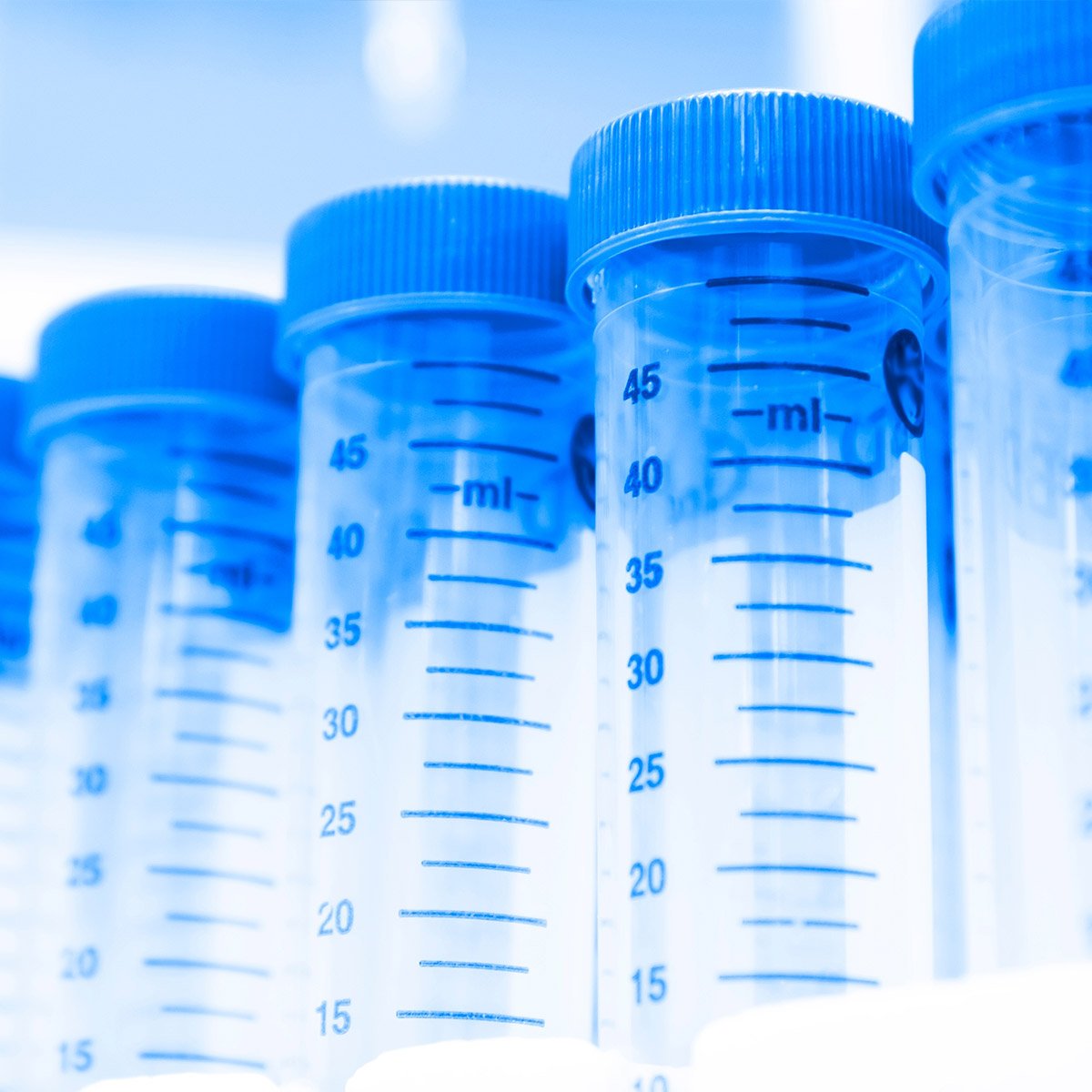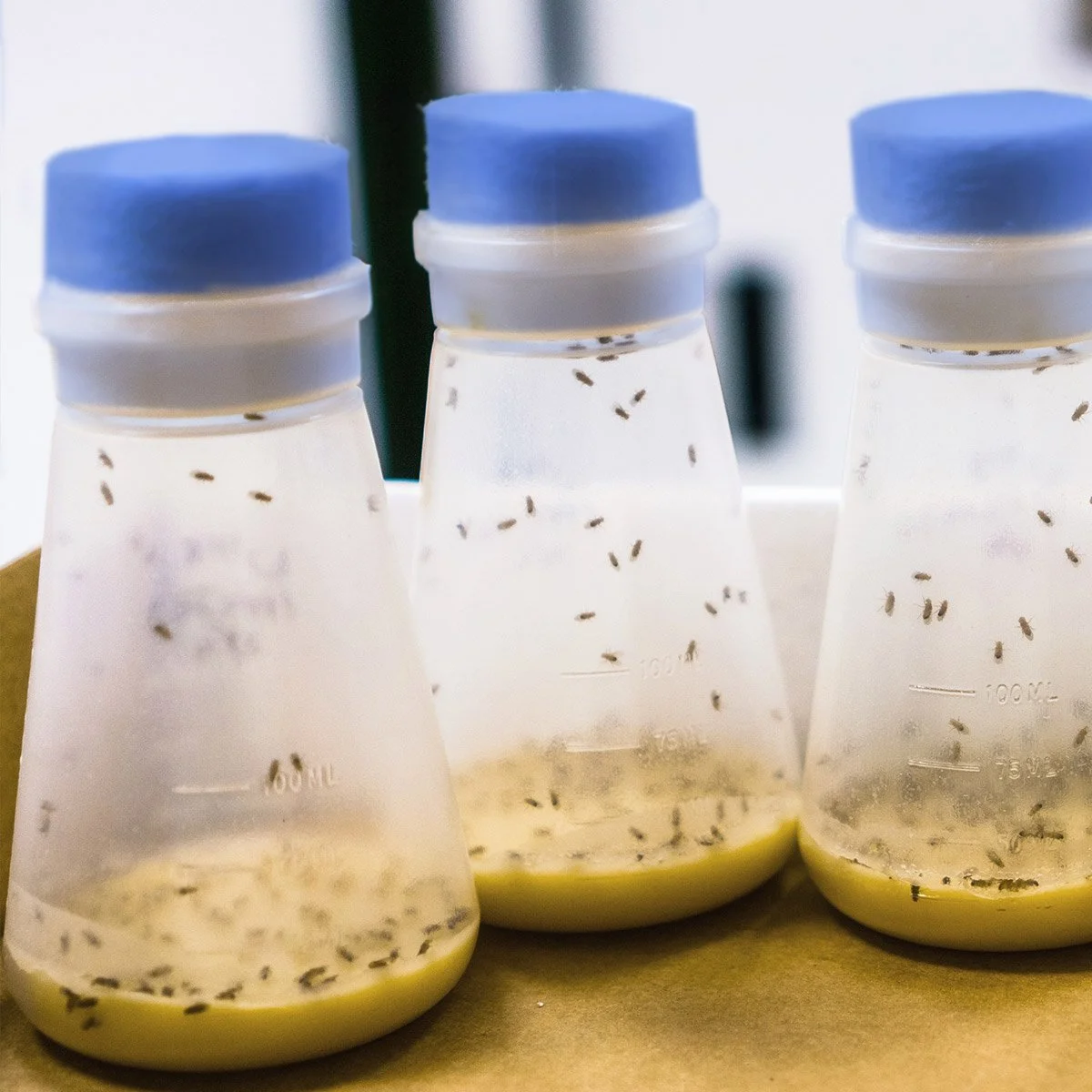Tens of millions of endotoxin tests are run annually using reagents derived from the blue blood of Atlantic horseshoe crabs. Testing is crucial for safety and quality control in pharmaceuticals, biologics, food, medical devices, and many single-use laboratory materials. It’s estimated that 700,000 Atlantic horseshoe crabs (Limulus polyphemus) are collected, bled, and released each year in the U.S. to enable this testing. Globally, testing demand is increasing, and wild populations are declining. The fear is that animal-derived endotoxin testing is becoming unsustainable.
This month, the U.S. Pharmacopeia (USP) joins Europe, Japan, and China Pharmacopeias by officially permitting recombinant reagents for endotoxin testing. If every lab using Limulus polyphemus-based reagents switched, it would prevent the deaths of around a hundred thousand horseshoe crabs each year. More likely, labs able to invest upfront will reap the benefits of improved bacterial endotoxin testing and relieve pressure from a tenuous dependency on wildlife.
Exploiting the idiosyncrasies of the horseshoe crab
Xiphosurans, commonly known as horseshoe crabs, congregate in high numbers to crawl onto warmer sands to lay and fertilize eggs during spring high tides and full moons. This mass spawning behavior is part of its evolutionary success. It also exposes them to trawling by fishing boats and harvesting by hand on beaches.
According to a 445-million-year-old fossil record, these animals have survived several mass extinction events with very little change to their body plan. They did minaturize for a time to survive the Permian-Triassic mass extinction, when volcanoes spewed carbon dioxide and methane, raising global temperatures by 15 degrees Celsius and killing off 90% of all species. Four species of horseshoe crabs survive today, isolated to Southeast Asian and the North American Atlantic coasts. They have seven eyes, strictly speaking, including a primary set of large, black, insect-like, compound eyes on the top of their shells for wide-angle vision and motion detection. They have twenty-year lifespans during which they can slowly regenerate a lost leg or their tail-like telson.
Crab name aside, these arthropods are more phylogenetically related to Arachnoidea than Crustacea, and like both spiders and crabs, they have blue blood-like hemolymph flowing through their circulatory systems. The blue color comes from hemocyanin, a copper-based pigment protein that transports oxygen pumped by a tube-shaped heart running most of the length of their body. The vast majority of cells in this hemolymph are amebocytes. Amebocytes protect the animal by releasing serine protease zymogens and coagulogen to form clots that immobilize pathogens. It’s a remarkable reaction. It was first scientifically observed by Frederik Bang, a Johns Hopkins researcher at the Marine Biological Laboratory (MBL) in Woods Hole, Massachusetts. A bacteria-infected horseshoe crab nearly solidified its entire circulatory system. Out of all the horseshoe crab’s unusual characteristics, mass spawning behavior and the ultrasensitivity of this innate immune system make them vulnerable to human exploitation.
Regrettably, biomedical usage is a threat to the horseshoe crab. The blood of wild-caught horseshoe crabs nets a price of $60,000 a gallon as a raw material to produce amebocyte lysate reagent for bacterial endotoxin testing. As many as 15% of 700,000 Atlantic horseshoe crabs collected for biomedical use in the U.S. annually do not survive bleeding (see figure 1, photo of the bleeding process)(1). Horseshoe crab populations are declining overall. Asian species are endangered from overfishing and habitat loss. The single American species population plummeted in 2002, resulting in legal protections. It remains vulnerable. Conversely, wild horseshoe crab population impacts, from weather-related die-offs to overharvesting, threaten global medical and life science supply chains.
Surrounded by Sticky, Stable Endotoxins
Endotoxins are high molecular weight complexes that contain lipopolysaccharides (LPS), a type of pyrogen, released from the cell walls of gram-negative bacteria. Ubiquitous in the environment and extremely heat and pH-stable, endotoxins have both hydrophilic and hydrophobic domains, allowing them to readily bind to surfaces. In the lab, equipment, glassware, cell culture medium, buffers, and reagents are all potential sources of contamination. Just thinking about them makes you side eye your stir bars. Endotoxins contaminate DNA preps, inhibit transfections, and limit protein expression and cell growth. Their presence can ruin reactions completely or muddle biological reality in experimental results. Prevention is less costly than decontamination, making it crucial to handle pyrogen-free lab materials carefully.
The highest endotoxin contamination threat is in medical care. Minute amounts of endotoxin elicit inflammatory responses in the bloodstream that can escalate to septic shock. Testing for endotoxins is performed at multiple stages of manufacturing injectable medicines and medical devices. The most common source of endotoxin contamination is pharmaceutical-grade water systems. The testing system works well, but is not sustainable as is. Demand for endotoxin testing is increasing in tandem with biotechnology products and pharmaceutical biologics, like monoclonal antibodies, vaccines, and cell and gene therapies. Biological therapeutics require especially extensive endotoxin testing.
Animal-derived amebocyte lysate assays have been the gold standard for bacterial endotoxin testing for nearly fifty years. The methodology works wonderfully and has surely saved lives. Horseshoe crab-derived amebocyte lysate reagent is applied based on an ultrasensitive serine protease cascade evolved in horseshoe crabs. Zymogen factor C becomes activated when it binds to bacterial lipopolysaccharide. Factor C then activates factor B to convert a proclotting enzyme into a clotting enzyme. The clotting enzyme cleaves two bonds in coagulaogen molecules to yield an insoluble coagulin gel. This is the principle of the Limulus Amebocyte Lysate (LAL) assay, derived from Limulus polyphemus, and the Tachypleus Amebocyte Lysate (TAL) assay, derived from the endangered Indo-Pacific horseshoe crab, Tachypleus gigas. The first commercial LAL test was approved by the U.S. FDA in the 1970s. LAL assays employ gel-clot, colorimetric, or turbidity-based detection in a single tube by eye or using an absorbance microplate reader. Instrumentation facilitates kinetic analyses of assay results. It’s significantly more humane and usually more accurate than pyrogen detection by injecting rabbits and taking their temperature. The gel-clot version is especially affordable since it requires no instrumentation. Most of the world relies on LAL gel clot assays for safety testing.
The ADVANTAGES of Using recombinant Reagents
Whether or not the fate of Xiphosuran on this planet pulls on your heartstrings, the synthetic-based assays grant opportunities to improve the quality and reliability of endotoxin testing, and with high-throughput automation, reduce costs.
Synthetic reagents eliminate dependency on wildlife for raw materials. The first commercial recombinant factor C (rFC) was released in 2003, shortly after the Limulus polyphemus population in America hit bottom. Today, every LAL maker offers a recombinant alternative. Recombinant manufacturing is more flexible from a manufacturer’s and supply chain viewpoint. You don’t need to be located near spawning horseshoe crabs. Recombinant production is easier to scale up or down. Biomanufacturing allows greater control over purity and reduced risk of contamination. In the end, you’re getting dependable lot-to-lot consistency that is not achieved with natural sources.
There are two broad categories of synthetic endotoxin reagents: recombinant factor C (rFC) and recombinant cascade reagents (rCR). Recombinant factor C is engineered with multiple potential endotoxin binding sites. In a single-step reaction, rFC is activated after binding endotoxin and cleaves synthetic chromogenic or fluorogenic peptide substrates. The recombinant cascade category includes factor C, factor B, and proclotting enzyme recombinants, to emulate the natural cascade. Both rFC and rCR assays allow fluorogenic, chromogenic, turbimetric, and kinetic detection. Peak testing specificity and sensitivity can be achieved with recombinants detected by fluorescence. Both rFC and rCR are compatible with plate readers, however, some manufacturers’ specific solutions require advanced instrumentation. Sophisticated designs are less labor-intensive. It’s these advanced automations in high-throughput scenarios that economize testing.
Sensitive and accurate testing protects patients and safeguards sources of scientific data. Validation work is needed for every sample type and condition to establish endotoxin testing protocols. In other words, a study must demonstrate that a protocol detects a specified range for each specific product. False negatives and false positives are always a concern. What I didn’t mention earlier about that LAL reagent is that it also contains factor G. Factor G is activated by (1,3)-β-D-glucan found in fungal cell walls and lab materials like cellulose-based filters. LAL assays typically incorporate a glucan-inhibiting buffer as a control against false positives. Both rFC and rCR methods circumvent false positives from β-glucan cross-reactions. There is no factor G to begin with. In addition to glucans, formula components of tested substances can inhibit or enhance reactions in any type of endotoxin test (i.e., chelating agents and surfactants). Interestingly, validating recombinants in bacterial endotoxin testing opened discussion in the literature on the functionality of other assay components. Are highly purified endotoxins ideal reference standards for environments containing endotoxins in varying states of degradation, from various microbe species?
The Recombinant-based Endotoxin Testing Quagmire
Right now, recombinant-based bacterial endotoxin testing is only used in 10% of testing in biomedical manufacturing, even though it has been commercially available since 2003. The techniques work. The challenge is to parlay the legitimate legacy of animal-derived LAL testing into a global, modernized system.
Manufacturers must demonstrate to regulatory bodies, like the U.S. FDA, that the endotoxin level in a biomedical product is below a specified limit, based on intended usage. In turn, government regulatory bodies rely on “compendial" standard method assays established by authoritative pharmacopoeias. Recombinant bacterial endotoxin assays were approved as an alternate method by the FDA in 2012, based on the U.S. Pharmacopeia (USP). Alternate status meant that recombinant-based endotoxin testing could be submitted for approval in conjunction with the gold standard LAL assay comparability data for every product. Companies anywhere in the world that sold products in the United States were beholden to using horseshoe crab-based reagents.
This month, the U.S. Pharmacopeia released Bacterial Endotoxin Testing Chapter <86>, to permit methods using recombinant cascade (rCR) and recombinant Factor C (rFC) reagents. Chapter <86> provides information on how to apply these reagents for quality control testing. Compendial techniques employ end-point fluorescence for peak specificity and sensitivity. This means new biopharmaceuticals tested with compendial recombinant methods no longer require comparability studies with legacy LAL tests. By doing so, the USP is joining European, Japanese, and Chinese pharmacopoeias' prior released guidance for recombinant rFC, and adding rCR, to boot. Chapter <86> was expected, but it represents a big change.
Recombinant testing is most likely to be adopted for new products. Old products may lag. The FDA has already approved new drugs with recombinant-based endotoxin testing. Kudos to Lily for leading the conversion to recombinants as a more reliable and cost-effective option. Performing comparability studies with old methodologies on previously approved substances is still a hurdle. Redesigning manufacturing processes takes time. As you might imagine, there will be a whole lot of historical LAL data to reconcile for substances retested with recombinant-based assays. As uptake increases and recombinant reagent prices fall, they are more likely to eliminate LAL testing. You can follow along with this Scorecard for Endotoxin Testing. If and when most testing converts, hopefully, horseshoe crab protection from overfishing will stay in place. It’s the least we owe this remarkable animal.
References:
Maloney T, Phelan R, Simmons N. Saving the horseshoe crab: A synthetic alternative to horseshoe crab blood for endotoxin detection. PLoS Biol. 2018 Oct 12;16(10):e2006607. doi: 10.1371/journal.pbio.2006607. PMID: 30312293; PMCID: PMC6200278.








This month, the U.S. Pharmacopeia (USP) officially permits recombinant reagents for bacterial endotoxin testing. If every lab using Limulus polyphemus-based reagents switched, it would prevent the deaths of around a hundred thousand horseshoe crabs each year. More likely, labs able to switch will reap the benefits of improved testing accuracy, and this will relieve pressure from our tenuous dependency on wildlife.